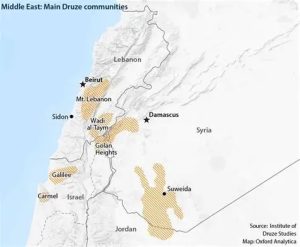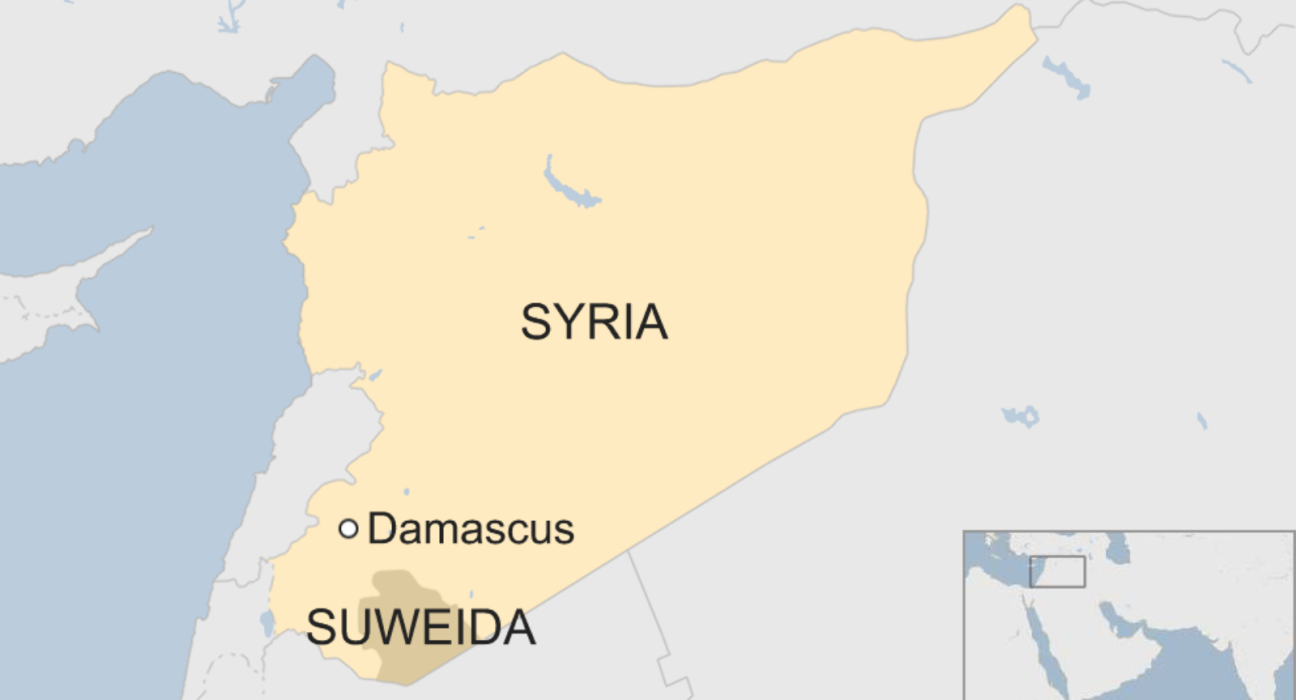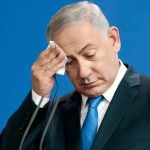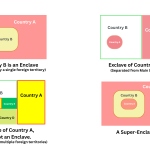Syria once again has been in the middle of a flashpoint, turning a local unrest between two minority communities into a broader confrontation in the region. The coexistence of diverse communities, each fighting for regional interests compounded with the transitional government of Ahmed Al Shaara, former Salafi jihadist member of Al-Qaeda makes the country more fragmented. The present situation in Syria reflects the lack of legitimate central power and foreign interference. Israel’s recent involvement also throws light on a deeper sectarian connection between the Druze and the Jews and adds a complex layer to this dynamic. This article will discuss and explain why Israel intervened in the conflict under the pretext of protecting the Druze community.
On 13th July, clashes broke out in the southern province of Sweida between the Druze religious minority and local Sunni Muslim Bedouin tribes. It was triggered by the abduction of a Druze merchant by the Bedouins on the Damascus highway. This was followed by retaliatory attacks and kidnap till 20th July. The unrest involved the Syrian government forces to restore peace in the region but the Syrian army sided with the Bedouin, and violence broke out against the Druze community. Soon, Israel jumped into the conflict defending the Druze community of Syria. Israel’s intervention in the violence with strikes on Syrian government offices, Syrian Ministry of Defense headquarters in Damascus led to increased tension. A seemingly minor confrontation between two communities soon turned into a wider regional conflict, engaging other regional actors like Turkey and Jordan and the US to mediate and call for a ceasefire. The recent violence has displaced more than 120,000 people, killing more than 300.
Druze-Bedouin Unrest: A Trigger Beyond Borders
The Druze faith is an offshoot of Shia Islam, established in the 11th century AD in Egypt with its own unique identity and beliefs. They are an ethno-religious non-dominant community, residing in Syria, Lebanon, Israel and in the Israeli-occupied Golan Heights. They represent a unique and distinct cohort due to their beliefs, geographic distribution and political allegiances. There are three factions of Druze in Syria, out of which one of the three do not get along with the Syrian government, led by Sheikh Hikmat al-Hijri. The Bedouins represent another significant minority in Syria’s social composition. They are nomadic tribes, living primarily in Syria’s south and east, expansive Al-Badia desert in cities of Sweida, Homs and Deir ez-Zor. They are Arabic speaking, Sunni Muslim population, with herding livestock as the predominant occupation.
The relationship between the two minority communities of Syria has been a mix of both cooperation and confrontation. They have co-existed for centuries, traded and are culturally similar. They have even fought together the Great Syrian Revolt against French rule in the 1920s. Yet, again this relation has also seen major clashes and land disputes. During the 1950s, the Druze community were discriminated by the Syrian government where the Bedouin tribe too had a role in cracking down on the Druzes. In 2000, a similar persecution was seen where the government sided with the Bedouin to open on the Druzes during a land dispute case.
History behind Israel’s support for Druze
Since Israel’s inception in 1948, the minority community of Druze was treated differently compared to other Arab minorities in the state. The Druze population of Palestine came into Israel after the war of 1948 and this population was used as a wedge in the Arab population in Israel. There was a constant fear of security threat in Israel posed as traitors and suspicious Arabs. So, they followed a policy of segregating the Druze populace from the other Arabs.
Then, to lift up the status of the Druze community, a “Minority unit” in Israel Defence Forces was created for recruiting minority groups like Druze, Bedouin and Circassian. By early 1949, the Minorities Unit consisted of 850 officers and men (400 Druzes, 200 Bedouin, 100 Circassians, and 150 Jewish officers and professionals). The idea of similar history, and common destinies was constructed and promoted strongly to ingrain the feeling of oneness and foster reliability between the Jews and Druze. In return, Druze also assured their allegiance to the State of Israel.
Until the enforcement of the Compulsory Conscription for all, the Druze was given the discretion to serve on a voluntary basis. On April 15, 1957, Israel’s Minister of Religions granted official legal recognition to the Druze as a separate religious community under a 1927 British Mandate ordinance. This move made the Druze community legally distinct from the Muslim community. Later, an identity card was issued for the Druze as “nationality: Druze” replacing the “nationality: Arab”. The emphasis of the “Druze community” created a sense of special status of the Druze in the country, enacting 1948 regulations to integrate the Arab minority- Druze, in the Jewish state.
Today, out of one million Druze population all over the world, around 150,000 Druze reside in Israel in places like Daliyat al-Karmel and Isfiy and in the Golan Heights. Since the IDF is composed of a large number of Druze men, it fosters a sense of loyalty to the state, making it the only Israeli Arab community to serve in Israel’s military. Following the Arab Spring and the outbreak of the Syrian Civil War, many Druze from Syria took refuge in Israel. A significant population of this marginalised community sought Israeli citizenship. The Druze soldiers have actively participated in defending the state since 1948, including the recent operations after the October 7 Hamas attack.

Israel’s Strategic Play in Southern Syria
Israel’s recent involvement in the inter-sectarian conflict in Syria points to a strategic connotation portrayed as an act of defending and backing the loyal minority of Syria. Israel currently positions itself as a protector of the Druze of Syria, pledging to intervene if they come under threat. Israel’s Prime Minister Benjamin Netanyahu has expressed solidarity with the Druze, calling them “brothers in arms”. With the stated objective of protecting the loyal community, Israel is also able to increase the strategic territorial depth, that it, the buffer zone, ensuring that violence and hostile incursions remain distant from its immediate borders.
In such a way, Israel can have strong presence in the Southern province of Syria. In doing so, Israel would move a step closer to the David Corridor mission: connecting the Golan Heights with southeastern Syria and extending toward the Iraqi border. Through this project, Israel will also connect with Iraq’s Shiite cities of Najaf and Karbala and Iraq’s Popular Mobilization Forces (PMF) involved in anti-Israel operations. It is a strategic and calculated move to build a foothold in the Middle East, thereby establishing a channel to reach Iran with the help of proxies present in those linking states.
Israel’s suspicion on Syria’s new government
Syria is already divided with no central power, with the marginalised communities establishing quasi semi-autonomous regions- Northeast Syria, Sweida and Deera. This reinforces the cycle of political volatility and social fragmentation in Syria. Also, the potential of Israel-Syria reconciliation has significantly dropped. Earlier this year, efforts were made by the US to bring about Syria to become another member of Abraham Accords. But differences persist, and the recent attacks on Syrian Druze broadened the divide between Israel and the transition government of Syria. Although a ceasefire had been agreed upon, Israel is determined to demilitarise southern Syria to ensure no threat is near its border. Israel still views the new government of Syria with deep suspicion, calling the Syrian President “Islamist jihadist”.
Israel’s presence in the Southern province of Syria further deepened the frustration of Syrians, again turning into a land of foreign interference. It undermines the image of a sovereign state and limits the transition government to assert authority and legitimacy. The Al Shaara government has shown a common pattern, that is, the exploitation of the minority communities. Earlier this year, the government forces cracked down on the Alawite minority, killing hundreds. If this persists, there will be growing scepticism and alienation from the ruling government and Syria will be trapped in the same decade-old cycle of instability and unrest, signalling a deeper marginalisation of the minority communities of Alawites, Druzes and Kurds. This repression will follow resistance from the non-majority groups, leading to further fuelling of unrest and deepening instability across Syria.




